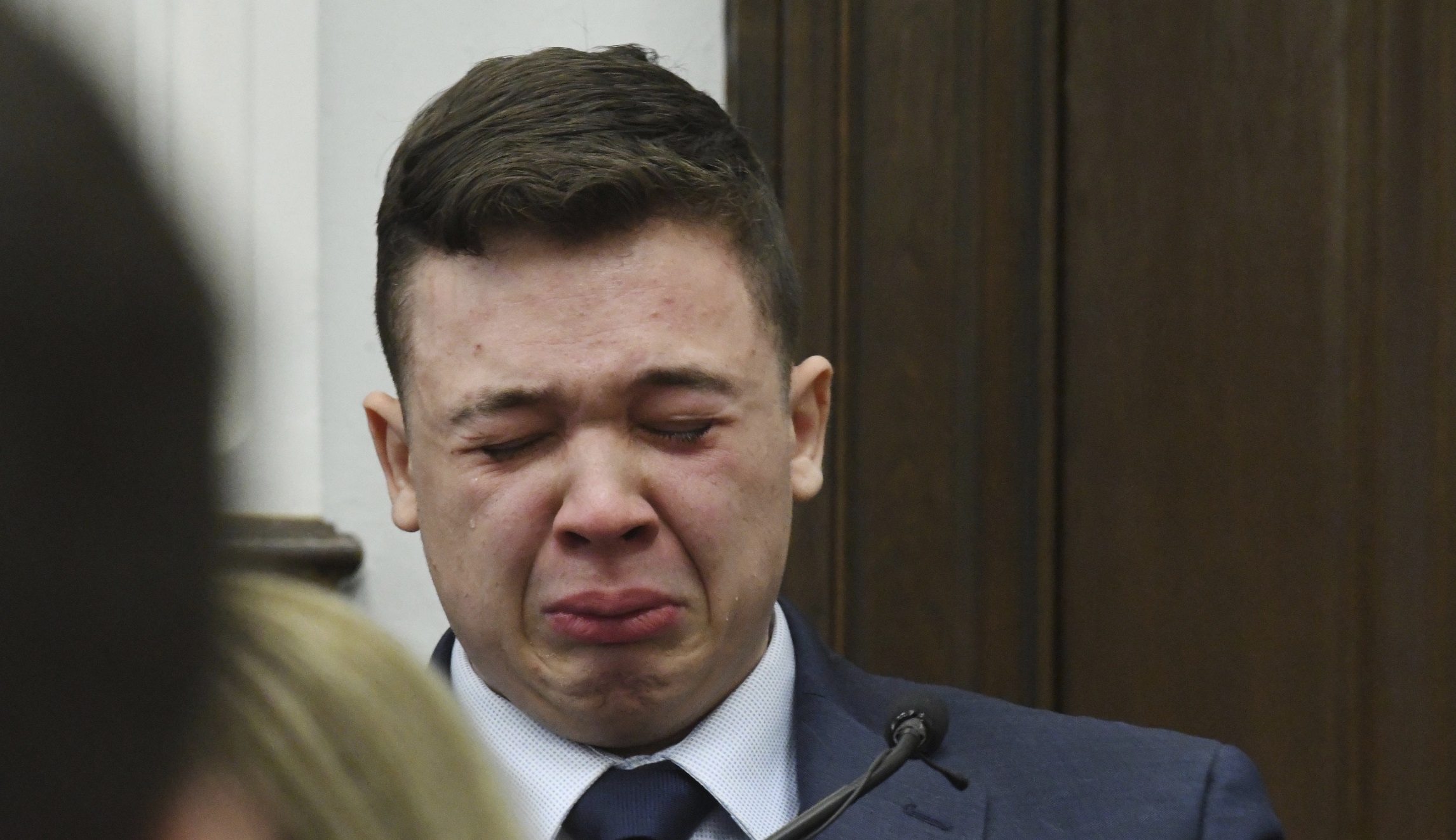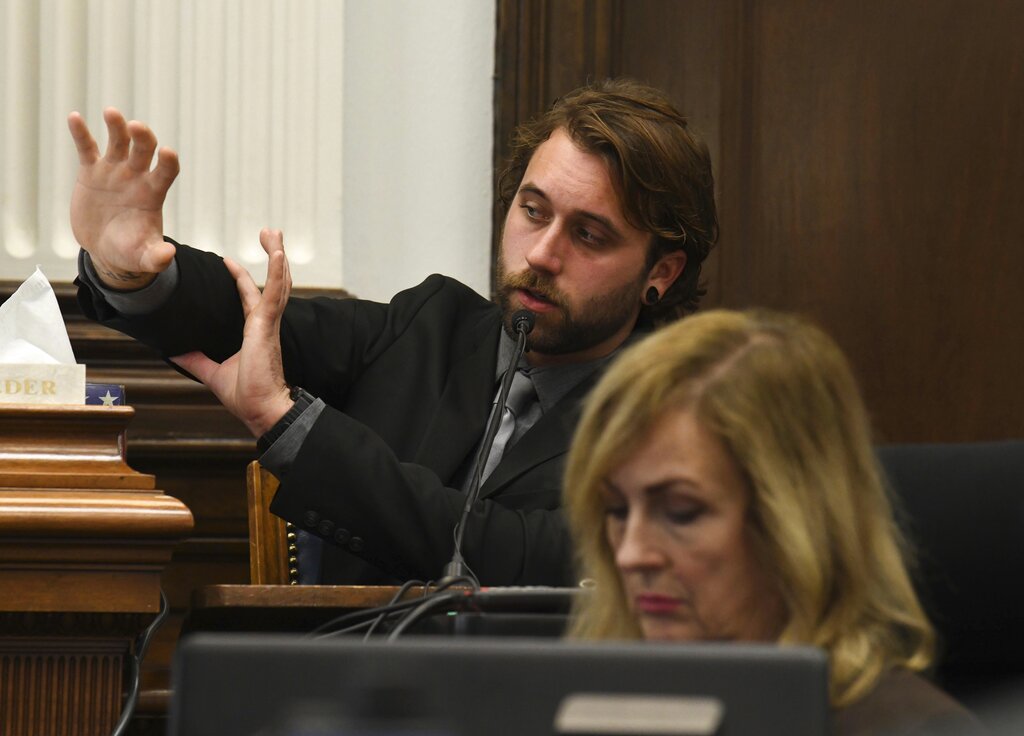Closing arguments are set to begin Monday in the trial of Kyle Rittenhouse, the Illinois teenager who fatally shot two men and wounded another during a night of violence in Kenosha, Wisconsin.
Rittenhouse, then 17, found himself in Kenosha on the third night of protests on Aug. 25, 2020, sparked by a white police officer shooting a black man in the back seven times at close range. The protests gave way to riots that ended in two deaths, several injuries, multiple arrests, and $50 million in damages.
Rittenhouse crossed the border into neighboring Wisconsin, where his father and grandmother lived. He testified he left his home in Antioch, Illinois, and went to Kenosha with his friend Dominic Black to protect a car dealership and offer medical aid.
But Rittenhouse, who was armed with an AR-style semi-automatic rifle Black purchased for him because he was too young to legally buy it himself, soon became a moving target for angry demonstrators who pointed their pistols, screamed threats, and lunged at him.
KYLE RITTENHOUSE HAS ‘NIGHTMARES’ ABOUT KENOSHA SHOOTINGS, MOTHER SAYS
Rittenhouse is accused of killing Joseph Rosenbaum, 36, and Anthony Huber, 26, and grievously injuring Gaige Grosskreutz after shooting him in the arm. All four men are white.
Rittenhouse is charged with six criminal counts, including first-degree intentional homicide; attempted first-degree intentional homicide; first-degree reckless homicide; reckless endangering; and illegal possession of a weapon under 18. If convicted of the most serious charge, he could spend the rest of his life behind bars.
Judge Bruce Schroeder indicated Friday he would let the jury consider offenses less serious than the ones Rittenhouse is currently charged with but did not announce what that entails.
James Kraus, one of the prosecutors, told reporters his request to allow jurors to consider lesser charges wasn’t an admission of weakness but standard practice in trials.
The defense rested its case Thursday, with the most compelling moments coming from Rittenhouse himself. Despite prosecutors painting him as a vigilante out of his depth, Rittenhouse told the jury he had no other choice than to fight his way out of an escalating situation.

Rittenhouse said he feared for his life when Rosenbaum lunged at him, Huber hit him with a skateboard, and Grosskreutz pointed a gun at him.
Rittenhouse answered questions for about six hours. When he first took the stand, he sobbed, prompting the judge to call for a short recess. When the court proceedings resumed, Rittenhouse calmly answered questions and explained his headspace that night.
“I didn’t want to have to kill anybody,” he said. “I was being attacked.”
During cross-examination, he was asked what risk Rosenbaum, who was unarmed, posed.
“If I would have let Mr. Rosenbaum take my firearm away from me, he would have used it and killed me with it and probably killed more people,” he said.
Lead prosecutor Thomas Binger asked Rittenhouse if he intended to kill all three men.
“I didn’t intend to kill them,” he said. “I intended to stop the people who were attacking me.”
SOME JOURNALISTS AND COURT WATCHERS ADMIT INITIAL BIAS IN RITTENHOUSE TRIAL
When it was their turn, the prosecution at times appeared to do more harm than good to their case.
Their star witness, Grosskreutz, the only person to survive being shot by Rittenhouse, lent support to the defendant’s claim that he acted in self-defense.

During cross-examination, the volunteer medic testified Rittenhouse shot him in the arm after he approached and pointed his pistol in Rittenhouse’s direction.
Daily Caller videographer Richie McGinnis didn’t do the prosecution any favors either. He testified he saw Rosenbaum lunge at Rittenhouse and reach for the barrel of his gun.
But Jason Lackowski, a former Marine who was also armed that night, claimed Rosenbaum was more of a “babbling idiot” than an actual threat.
On Friday, both sides fought over forensic technology. The defense challenged the prosecution’s attempt to introduce enlarged images taken from drone video. Prosecutors argued the images were a direct contradiction of Rittenhouse’s testimony that he never pointed his weapon at protesters prior to Rosenbaum’s shooting. The defense said the way a state investigator used to enlarge photos could not be trusted to accurately show what Rittenhouse was doing.
The judge in the trial has also generated headlines. Schroeder has repeatedly criticized prosecutors for their tactics and issued Binger a stern warning over what he perceived as violations of his orders.
CLICK HERE FOR MORE FROM THE WASHINGTON EXAMINER
As closing arguments and jury deliberations near, Kenosha is bracing itself for more unrest.
On Friday, Gov. Tony Evers activated 500 Wisconsin National Guard troops to partner with local law enforcement.
“I urge folks who are otherwise not from the area to please respect the community by reconsidering any plans to travel there and encourage those who might choose to assemble and exercise their First Amendment rights to do so safely and peacefully,” Evers said.
